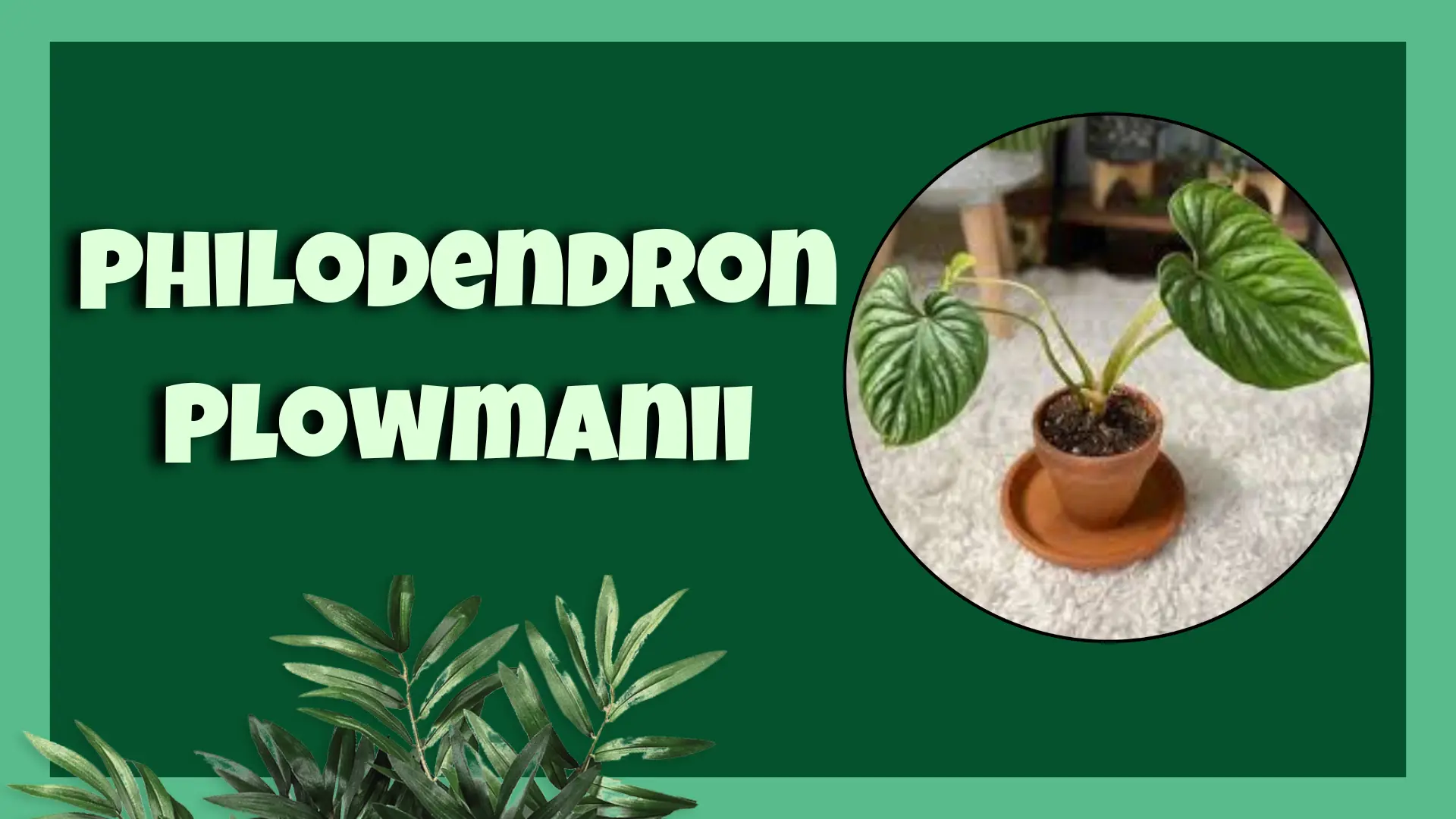Philodendron plowmanii is one of those rare, exotic houseplants that immediately captures attention with its uniquely textured leaves and dramatic presence. Known for its striking foliage, this species is often sought after by collectors and plant enthusiasts who want to add something extraordinary to their indoor jungles.
In this article, we’ll explore everything you need to know about the Philodendron plowmanii—its origins, unique characteristics, and how to grow and care for it successfully.
Origins and Background
Philodendron plowmanii belongs to the Araceae family and is native to the tropical rainforests of Peru and Ecuador. This stunning climbing plant was named in honor of botanist Timothy Plowman, who extensively studied tropical flora.
In the wild, it thrives as a terrestrial creeper, crawling along the forest floor rather than climbing trees like many other philodendrons. This creeping growth habit makes it an unusual and fascinating addition to a houseplant collection.
Distinctive Features
The Philodendron plowmanii is instantly recognizable thanks to its:
- Heart-shaped leaves: Large, cordate leaves with a metallic sheen.
- Color variation: Young leaves emerge light green and darken with age, often displaying a silvery or bluish tint.
- Ruffled petioles: Unlike most philodendrons, its petioles (the stalks attaching leaves to stems) are winged and ruffled, adding even more charm.
- Creeping growth: Instead of climbing upward, it sprawls horizontally, making it perfect for wide pots or terrarium setups.
These features make it both a statement piece and a conversation starter in any plant lover’s home.
Ideal Growing Conditions
Since this plant hails from tropical rainforests, it appreciates warm, humid, and slightly shaded conditions. Here’s a breakdown of its needs:
1. Light
- Prefers bright, indirect light.
- Avoid direct sun, which can scorch the leaves.
- Can tolerate lower light, but growth will be slower.
2. Temperature
- Thrives between 65°F–80°F (18°C–27°C).
- Keep it away from cold drafts and avoid letting temperatures drop below 55°F (13°C).
3. Humidity
- Loves high humidity (60% and above).
- Use a humidifier, pebble tray, or group it with other plants to maintain adequate moisture in the air.
4. Soil
- Best grown in a well-draining aroid mix containing orchid bark, perlite, coco coir, and a bit of peat or compost.
- Soil should stay moist but never soggy.
5. Watering
- Water when the top 2 inches of soil feel dry.
- Reduce watering during winter when growth slows.
- Ensure proper drainage to prevent root rot.
6. Fertilizer
- Feed monthly during the growing season (spring and summer) with a balanced, diluted liquid fertilizer.
- Avoid overfertilization, which can damage the roots.
Growth & Maintenance
The Philodendron plowmanii has a moderate growth rate. Since it creeps rather than climbs, you may want to provide a wide planter to accommodate its horizontal growth.
- Repotting: Every 2–3 years or when roots start circling the pot.
- Pruning: Rarely needed except for removing dead or yellowing leaves.
- Cleaning: Gently wipe leaves with a damp cloth to remove dust and help with photosynthesis.
Propagation
Propagation of Philodendron plowmanii is typically done via stem cuttings:
- Cut a healthy stem section with at least one node.
- Place the cutting in water or directly into moist soil.
- Keep it in a warm, humid environment until roots develop.
Patience is key, as this species tends to root more slowly compared to common philodendrons.
Common Problems & Solutions
Like most houseplants, Philodendron plowmanii can face a few challenges:
- Yellowing leaves → Overwatering or poor drainage.
- Brown leaf tips → Low humidity or underwatering.
- Pests (spider mites, thrips, mealybugs) → Treat with neem oil or insecticidal soap.
- Slow growth → Insufficient light or lack of nutrients.
Is Philodendron Plowmanii Rare?
Yes, this plant is considered rare in cultivation, especially outside its native regions. Its slow growth and striking foliage contribute to its high demand among collectors. While not as common as Philodendron hederaceum or Monstera deliciosa, it is increasingly becoming available through specialty plant shops and online sellers.
Why Grow Philodendron Plowmanii?
- Unique creeping growth habit.
- Stunning, textured leaves with metallic tones.
- A rare and valuable addition for collectors.
- Low-maintenance compared to many exotic plants.
Final Thoughts
The Philodendron plowmanii is more than just a houseplant—it’s a living work of art. Its unusual ruffled petioles, heart-shaped foliage, and creeping growth habit make it a captivating specimen for collectors and plant enthusiasts alike.
If you’re ready to care for something a bit more unique, this philodendron is worth the effort. With the right mix of humidity, light, and love, your Philodendron plowmanii will reward you with its rare beauty for years to come.

